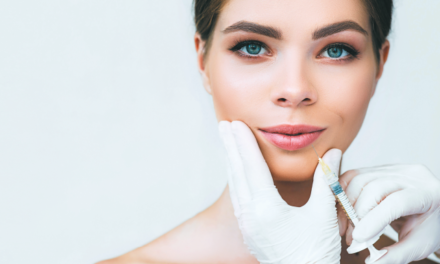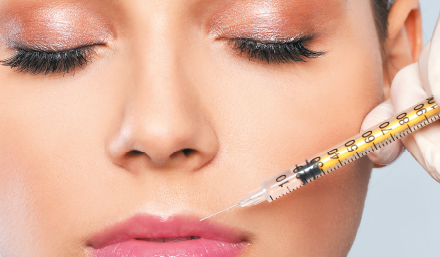Steven B Hopping, MD, FACS talks us through the indications for injections rhinoplasty, his technique, and how to deal with complications
Injection of fillers to improve nasal aesthetics is certainly not a new concept but has truly come of age with the advent of safe, FDA approved fillers now available on the market. Many patients have concerns about their noses that they would like to improve and readily embrace the idea of a nonsurgical option. Many of these concerns can be effectively addressed with the ‘off-label’ use of current medical-grade fillers. A large number of these patients have a history of previous surgical rhinoplasty and are reluctant to undergo another surgical intervention. Other patients with no previous surgical history are afraid of the knife. Voila! Injection rhinoplasty — no cutting, no anesthesia, no downtime. These aspects of injection rhinoplasty make it very appealing indeed.
However, not all patients are candidates for injection rhinoplasty. The procedure cannot reduce the size of the nose, cannot lift a droopy nasal tip, reduce a bulbous tip or improve nasal breathing disorders. The procedure can make noses straighter, fill depressions, help asymmetries, raise the nasal bridge and the tip to a lesser extent, but cannot make noses smaller. As with all aesthetic procedures, proper patient selection and education is key to a happy result.
This study reviews the indications for injection rhinoplasty, suggests safe injections techniques, and, perhaps most importantly, discusses the avoidance and treatment of complications, some of which can be devastating.
Patients and method
The author’s experience with the ‘off-label’ use of fillers for nonsurgical injection rhinoplasty is detailed, including patient evaluation, counseling and consent, safe injection technique, and treatment of complications. Applicable literature regarding injection rhinoplasty are reviewed.
Results
According to Wang and Friedman1, hyaluronic acid and calcium hydroxylapatite are the two most commonly used fillers for nasal injections. The author recommends using hyaluronic acid fillers initially for all treatments since they require no skin test and can be readily augmented or reversed.
Secondary treatments can be higher density, cross-linked HAs, hydroxylapatite, PMMA2 or even fat3. The patient must be cautioned that there are no reversal treatments for some of these products and that a skin test is required in the case of PMMA with bovine collagen vehicle. Medical grade silicon is available in the US for ‘off-label’ use but patients must be properly consented and made aware that multiple treatments with small incremental boluses (using the microdroplet technique) are required and that granulomas are a greater risk than with HAs.
The best candidates are patients with minor defects such as depressions, asymmetries, small dorsal concavities or prominences. Minor deviations of the nose can be improved, and limited tip elevations can be achieved. The nasal bridge can be enhanced and is perhaps the most frequently requested indication. Reduction rhinoplasty is not possible with injection techniques.

Figure 2 (A) Before and (B) after injection rhinoplasty to correct crooked nose. 1 cc of PMMA with bovine collagen
As discussed by Johnson and Kontis4, the proper plane for injection is the deep fatty layer, just superficial to the perichondrium and periosteum utilizing small incremental boluses. This plane has minimal vascular supply and is also deep to the SMAS layer.
Prior to injection, the nose must be prepped thoroughly with povidone-iodine. A sterile technique is a must to prevent infection. No prophylactic antibiotics are given. The author recommends using a 25 gauge cannula placed through a midline cutaneous puncture with a #25 gauge needle. Often, it is helpful to place a small aliquot of 1% lidocaine with 1:100,000 epinephrine at this site. The cannula should be advanced to the desired level, for example, the glabella in the case of dorsal augmentation. Injections should be then be made with minimal pressure as the cannula is withdrawn in a retrograde fashion. It is recommended that the injector keep digital pressure on the area of the angular vessels with the noninjecting hand to help prevent retrograde flow to the retinal vessels in the event of a vascular injection (Figure 4).

Figure 3 (A) Before and (B) after injection rhinoplasty to raise the nasal dorsum. Patient had three previous rhinoplasties.
Patients are asked to return in 6–8 weeks for evaluation. If needed, a touch-up treatment can be provided. Such treatments are requested by patients approximately 50% of the time. The next visit is scheduled for 6 months. Patients are told in advance that these fillers are not permanent and that a series of treatments are required to maintain correction. Many practitioners feel that fillers can promote collagenesis, which can contribute to longevity of clinical results. Patients are informed that such collagenesis will vary from patient to patient and is also filler dependent.
Complications
As in all aesthetic treatments, avoidance of complications is paramount. With injection rhinoplasty, complications can be divided into three categories: aesthetic, vascular and infectious.
Aesthetic complication can be minimized by proper patient selection. Patients with minor nasal depressions, asymmetries, crooked noses, and inadequate dorsal bridges are the ideal candidates.
Patients must be informed in advance that injection rhinoplasty is not permanent and that multiple treatments will be required, perhaps indefinitely. Products that produce autologous collagen formation can provide enhanced longevity results.
Vascular occlusion can occur from injecting a bolus of product directly into the lumen of a vessel or from external vessel compression resulting in vascular compromise.
Vascular injection is usually noted immediately by blanching of the surrounding tissue. Treatment priority is to immediately stop injecting filler and inject 300 units of hyaluronidase into the area. If no improvement is noted within 5 minutes, repeat another 300 units of hyaluronidase5. Warm compresses, nitroglycerin paste, and systemic aspirin have also been recommended. Tadalafil has also been recommended for vessel vasodilatation. Antibiotic therapy is often commenced prophylactically. The majority of these vascular compromised incidents will heal with minimal deformities but in some cases can lead to permanent scarring and disfigurement.
Blindness secondary to intravascular injection with retrograde flow resulting in occlusion of the retinal vessels has been described in a world survey by Carruthers et al6. Blindness secondary to filler injection is rare but devastating. Blindness has been reported with nearly all fillers including fat. Cases have been reported with both needle and cannula injection techniques. The recommended protocol for blindness is immediate high dose hyaluronidase and ophthalmological intervention.
Infection is the most common serious sequelae of injection rhinoplasty. Sterile technique is essential to prevent bacterial contamination. Many times infection is secondary to vascular compromise and necrosis with secondary infection.
Conclusion
Injection rhinoplasty is a useful ‘off-label’ tool for the aesthetic practitioner that is rapidly increasing in popularity, primarily due to social media exposure. Because the procedure is injection, not surgery, it can be performed without anesthesia and has a speedy recovery; while interest and demand are high and rising.

Complications from injection rhinoplasty are rare but can be devastating. Sterile technique, knowledge of the vascular anatomy, proper injection technique and immediate treatment of vascular injuries and infections is paramount. Every practitioner should have an ‘injection emergency kit’ available with adequate hyaluronidase (600 units), aspirin, and nitropaste.








